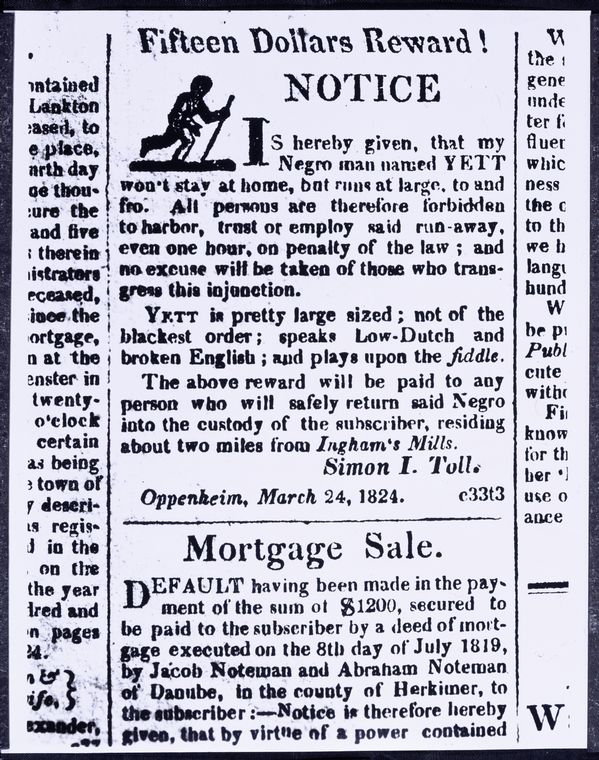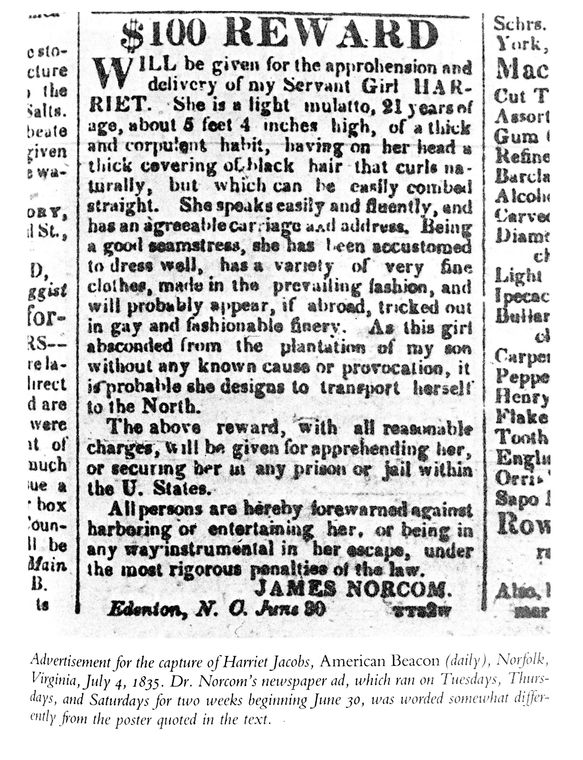
In literature survey courses, I typically teach slave narratives like Harriet Jacobs’ Incidents in the Life of a Slave Girl (1861) or Narrative of the Life of Frederick Douglass (1845) as part of my unit on the nineteenth century. As The New York Times Magazine reported this summer, {https://www.nytimes.com/interactive/2019/08/19/magazine/slavery-american-schools.html}, there is “widespread slavery illiteracy” among American students. Therefore, instructors must take care to historicize and contextualize slave narratives and other abolitionist literature as the radical texts that they were, rather than the canonized texts that they now are.
One way to provide this necessary context is to show students fugitive slave advertisements like these, which were both sourced from NYPL’s digital collections. These documents portray the orthodoxy of the time period and what abolitionists were fighting to change.
As an in-class writing assignment, I would give students one or both of these ads and ask them to respond to the following question: What are the assumed sympathies of the reader of this advertisement? I would also ask them to reflect on the differences between the two documents.

While doing research for this assignment, I came across Freedom on the Move {https://freedomonthemove.org/}, a database that will compile newspaper advertisements for enslaved people. Although the database is not yet completed, it should be a great resource for anyone teaching the history of American slavery.


